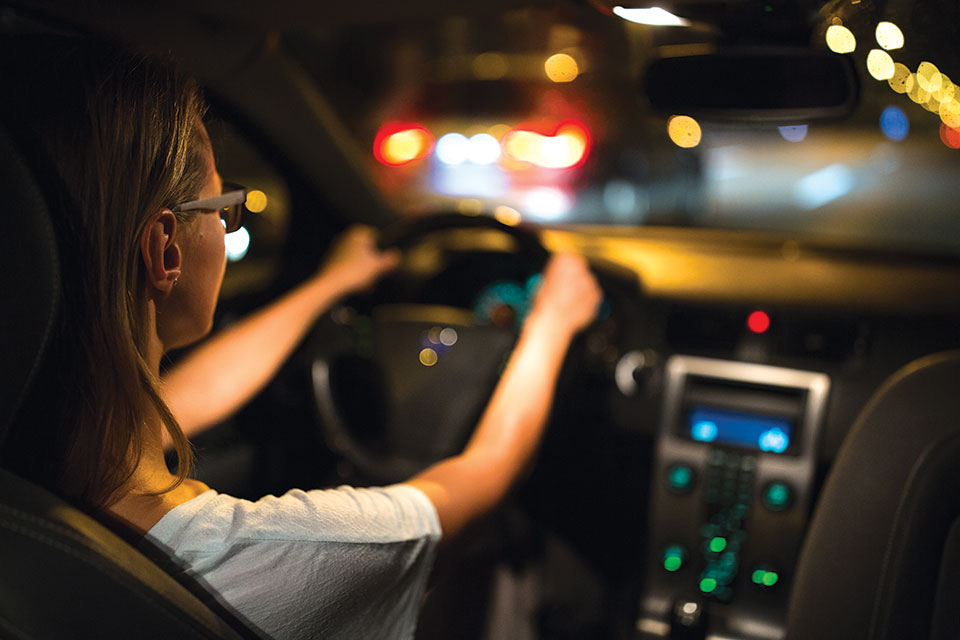
I am a big fan of daylight saving time and look forward to Sunday, March 14, 2021, when it will next arrive.
Regardless of the time of year, when it gets dark there are some big concerns we all need to be aware of. Depending on where you live, many of the streets have minimal lighting and in many neighborhoods, people are active in the dark. There are dog walkers, joggers, bicyclists, and people walking for exercise.
A concern we have heard from some neighbors and readers is how so many people are wearing dark clothes at night, which can make it difficult for drivers to spot them in some areas. This has happened to my husband and me on numerous occasions and I am thankful we both have good vision.
It is important to wear clothes that can be easily seen in the dark or to wear a vest. We have actually seen some people carry a flashlight as a means to stay safe in the streets.
Everyone else, especially vulnerable road users like pedestrians and bicyclists, are being killed at an alarming rate. The number of pedestrians killed in 2019 was approximately 6,283, the highest such number since 1990.
The rise in pedestrian and cyclist deaths, and the overall decline in traffic fatalities, comes at a time when automakers are rolling out more safety technology, such as automatic emergency braking, lane-keep assistance, and pedestrian detection.
But new safety technology doesn’t automatically mean fewer crashes. While automakers are getting better at protecting the people who buy their cars, they still aren’t doing enough to minimize the carnage inflicted by their customers.
The American Automobile Association conducted a series of tests using vehicles with automatic emergency braking and pedestrian detection alerts on a closed course with dummy pedestrians. The vehicles struck the dummy pedestrians that were crossing the road 60 percent of the time, and this was in daylight hours at speeds of 20 mph.
It is estimated that of the pedestrians killed 76 percent were hit after dark, according to the National Highway Traffic Safety Administration (NHTSA) data. The American Automobile Association’s tests of high-tech detection systems found them to be almost completely ineffective at night.

National Highway Traffic Safety Administration (NHTSA)
The following information is provided by the NHTSA.
Pedestrian Safety
- Be predictable. Follow the rules of the road and obey signs and signals.
- Walk on sidewalks whenever they are available.
- If there is no sidewalk walk facing traffic and as far from traffic as possible.
- Keep alert at all times; don’t be distracted by electronic devices that take your eyes (and ears) off the road.
- Whenever possible cross streets at crosswalks or intersections where drivers expect pedestrians. Look for cars in all directions including those turning left or right.
- If a crosswalk or intersection is not available locate a well-lit area where you have the best view of traffic. Wait for a gap in traffic that allows enough time to cross safely; continue watching for traffic as you cross.
- Never assume a driver sees you. Make eye contact with drivers as they approach to make sure you are seen.
- Be visible at all times. Wear bright clothing during the day and wear reflective materials or use a flashlight at night.
- Watch for cars entering or exiting driveways or backing up in parking lots.
- Avoid alcohol and drugs when walking; they impair your abilities and your judgment.
Bicycle Safety
- Ride a bike that fits you – if it’s too big it’s harder to control the bike.
- Ride a bike that works – it really doesn’t matter how well you ride if the brakes don’t work.
- Wear equipment to protect you and make you more visible to others like a bike helmet bright clothing (during the day) reflective gear and a white front light and red rear light and reflectors on your bike (at night or when visibility is poor).
- Ride one per seat with both hands on the handlebars unless signaling a turn.
- Carry all items in a backpack or strapped to the back of the bike.
- Tuck and tie your shoelaces and pant legs so they don’t get caught in your bike chain.
- Plan your route – if driving as a vehicle on the road choose routes with less traffic and slower speeds. Your safest route may be away from traffic altogether in a bike lane or on a bike path.
Drivers
- People on bicycles have the same rights and responsibilities as people behind the wheel of a vehicle.
- Yield to bicyclists as you would motorists and do not underestimate their speed. This will help avoid turning in front of a bicyclist traveling on the road or sidewalk often at an intersection or driveway.
- In parking lots at stop signs when packing up or when parking search your surroundings for other vehicles including bicycles.
- Drivers turning right on red should look to the right and behind to avoid hitting a bicyclist approaching from the right rear. Stop completely and look left-right-left and behind before turning right on red.
- Give cyclists room. Do not pass too closely. Pass bicyclists as you would any other vehicle – when it’s safe to move over into an adjacent lane.
- Obey the speed limit reduce speed for road conditions and drive defensively to avoid a crash with a cyclist.
